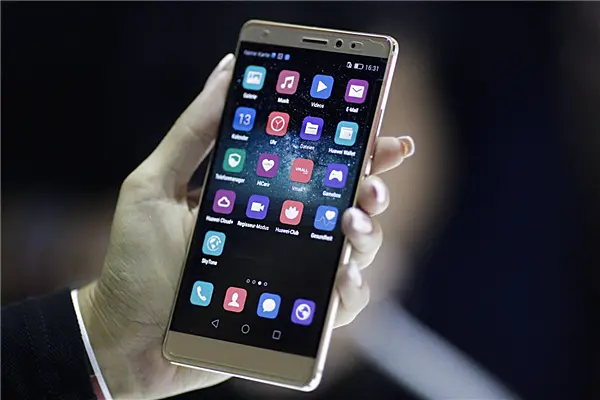The Huawei Mate S is one of the company’s high-end smartphones, which generated huge income last year.PHOTO:MARKUS SCHREIBER/ASSOCIATED PRESS
(Wall Street Journal) Huawei Technologies Co. boasted of dramatic gains in the global smartphone market as it launched a new flagship handset that signals its ambitions in the lucrative U.S. market.
The Chinese company’s telecom networking equipment for carriers, such as routers and switches, has effectively been banned in the U.S. because of national security concerns. But Huawei’s other businesses such as consumer products like smartphones aren’t blocked at all.
Company executives attribute Huawei’s fast growth to its focus on investing in research and development and building many of its own components, rather than the quicker approach preferred by many Chinese smartphone vendors, who sell phones assembled from components sold by third-party companies.
Richard Yu,head of Huawei’s consumer business group, which consists mainly of mobile phones, said at a launch event for its new smartphone that the company’s consumer business sales grew by nearly 70% last year to more than $20 billion, as it shipped 108 million smartphones—a 44% increase from the 78 million that it shipped in the prior year.
Mr. Yu also cited data from research firm GfK that gives Huawei a 9.7% share of the global smartphone market in September, enough to put it in third place, behindSamsung ElectronicsCo.’s 28.3% andAppleInc.’s 11.8%.
“A few years ago, nobody knew Huawei,” Mr. Yu said at a media event held Tuesday on the sidelines of the Consumer Electronics Show in Las Vegas.
The sales figure, which was earlier reported by The Wall Street Journal, came as the Shenzhen-based company introduced its new flagship smartphone,the Huawei Mate 8, to U.S. consumers, where it will take aim at Samsung and other Android phone manufacturers.
The Mate 8 is a premium smartphone, priced at €599 ($644) for the base model.
Huawei attempted to position the smartphone as a business tool, with teleconferencing capabilities and connectivity features that allow the phones to be compatible with many carriers spanning over a number of geographies, tapping into Huawei’s longtime experience in telecom networking equipment.
Huawei played up its ties withAlphabetInc.’s Google unit, touting its smartwatch’s use of Google’s Android Wear operating system. Huawei executives also showed off the Nexus handset that it released last year in collaboration with Google, giving away the units in grab bags to reporters and guests at the media event on Tuesday.
In an interview,Glory Zhang,chief marketing officer for Huawei’s consumer business group, said that Huawei’s phones were selling particularly well in Western Europe, and was the No. 2 smartphone vendor in Italy and Spain.
According to research firm IDC, Huawei was second behind Samsung in Spain and ranked third in Italy behind Samsung and Apple Inc. in the third quarter of last year.
Huawei has devoted attention to Western Europe, where it set up a design center in Paris, in a bid to draw on what it calls the region’s classical aesthetic.
Ms. Zhang said that Huawei was “definitely” making a play for a higher end of the market than it had in the past, though she declined to offer a breakdown of Huawei’s high-end phone sales versus its mid- and low-end phones.
“The higher- and middle-end of handsets will compose a bigger percentage of revenue,” she said. “We’ve just started.”
Ms. Zhang also touted the company’s research and development of its own application processors, which she said the company had invested $100 million in.
“For so many other companies, they don’t invest in R&D,” Ms. Zhang said. “You can buy the components anywhere, and so many companies do that, but we never do that. We care about our innovations.”
Neil Shah, an analyst at Counterpoint Technology Market Research who attended the launch event, said that the new device would likely give the Chinese company a boost against incumbent Android handset makers like Samsung, pointing to the device’s ability to be sold as an “unlocked” device that can work with any carrier, and design features that he described as more attractive than Samsung’s.
“It will take time, and it won’t immediately capture even 2% or 3% of the market, but this is a good start for them,” Mr. Shah said.
 简体中文
简体中文

